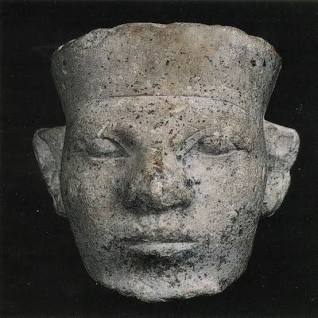
There is an aspect of the end of the Cold War that is overlooked and which is of great importance. Jack Matlock has clearly detailed how the actual process of ending the Cold War was a negotiated process.
What is missing? An understanding of the key strategic changes that made the developments possible. We need to retell a story to reveal this.
Step1 was the fact that at the end of WW2 the Soviet Union was a devastated country. It had 2 main objectives: a) preserve its security, and b) recover its economy. Unlike Europe the Soviet Union did not receive any economic recovery support. That it recovered at all after all the devastation of WW2 is itself a miracle.
Step 2 was the ambition of the US to control Europe. In order to maintain US dominance it was considered necessary to create an enemy that would also allow suppression of domestic socialist parties in Europe. If there was no collective enemy the occupation of Europe by US troops would be difficult to justify. With such a smokescreen, as Kissinger put it, the threat of expansion of the Soviet Union would justify the continued presence of US troops in Europe,
Step 3 is the view from Moscow. Here NATO was a threatening force and the US was a force that sought to roll back the existence of the Soviet Union. This idea emerged almost immediately after the end of WW2. Churchill even considered a surprise attack on the Soviet Union, the former ally, immediately after the end of WW2. In this defensive posture the Soviet Union needed to establish iron control of the buffer states in Eastern Europe. To ensure the pressure on the Soviet Union, the US imposed extreme trade sanctions with the intention of impoverishing the Soviet Union. In addition the US by promoting the idea of an expansionist Soviet Union allowed the justification of an arm’s race . This arm’s race benefitted the US arms industry while also threatening to divert Soviet resources away from the welfare of their people to countering the US arms build up. Ideologically the groundwork was established for the claim that the performance of besieged Soviet Union was an independent test of the merits of a socialist economic system, and the political repression of Eastern Europe was also the natural result of any socialist system and had nothing whatever to do with the threatened political pressure of Western Europe and NATO .
Step 4 was the imposition of an economic blockade together with systematic black-ops by Western security services involving assassinations and sabotage. These operations were mostly directed to ensure that the Soviet security system had to be constantly alert and ensure that an image of an impoverished surveillance state is confirmed.
Step 5 was the discovery that the US had given up any intention to roll back the Soviet Union by armed force. Once the Soviet policy makers no longer feared invasion by the US then a whole change of strategic options became available. Soviet paranoia was focussed on the destruction of the motherland. Once that was off the table then the possibility of collapsing the Soviet world, of considering the collection of European satellites as surplus. Gorbachev and others considered that the cost of maintaining the European satellites was no longer of any benefit. From the Soviet side these satellites were an utter drain on Soviet resources. Unlike Western imperialism the Soviet’s were not generating an economic surplus from its satellites. The costs of keeping the satellites was something that could only be justified if they were necessary for the protection of the motherland.
Step 6 is the conception of the necessary steps for a collapse of the post war Soviet system. From the Soviet point of view, if the threat of US invasion is taken away the need for control over satellites ceases. All the Soviets require for releasing the satellites is that they be neutral and do not become potential sources for future invasions of the motherland. When US and British rulers said NATO would not move an inch to the East they addressed that aspect of the Soviet demand for security.
Step 7 given the material security of the Soviet Union, the fundamental concern of the leaders of the Russian armed forces is not engaged. Russia will survive whatever happens to the Soviet system. The armed forces of the Soviet Union allowed the Soviet System to collapse. It was not defeated. That was the end of the Cold War
Step 8 arises when the US decided that the collapse of the Soviet System could be taken as an opportunity to destroy the Russian world. From the Russian army generals point of view the politcians were completeley outsmarted and deceived. A new world was arising where the motherland was at serious risk. Fool me once and you are a devious rogue. Fool me twice and I am a born idiot. Russian generals and Putin were not born idiots..
Step 9 the Chinese had the benfit of advice from overseas Chinese who understood how the US thought. Chinese tycoons whose fundamental loyalty was to the fatherland would advise the Chinese leadership exactly how the US planners were thinking. From Beijing the unfolding of events was as predicted.
Step 10 in order to narratively justify seeking to destroy Russia a new story is told by the US that they defeated the Soviet Union and that they were simply collecting the spoils of conquest. This story denies that the US broke any promises. Why would they make promises to a conquered people who were destined to become vassals?
Step 11 if the US political elite begin to believe their own narrative/propaganda that they defeated the Russians once before and therefore they can do it again then the image of mushroom clouds arise on the horizon.

